Teltonika WiFi 5 Enterprise Rack-Mountable SFP/LTE Router | RUTXR1
This item is available for shipping or collection from our Centurion branch.
This item is available for shipping or collection from our branch.

Our everyday lives are consistently affected by load shedding and network outages. To combat this, Network Admins must set up complicated networks and have fail-overs in place to ensure maximum uptime. Luckily, Teltonika has a solution!
With a user-friendly interface and a remote management platform, you can always have access to your Teltonika RUTXR1 and make network changes whenever needed.
Once you are connected to the router via LAN cable or Wi-Fi, open a browser and navigate to http://192.168.1.1. You will be presented with the below screen. You will find the router login details at the bottom of the router.
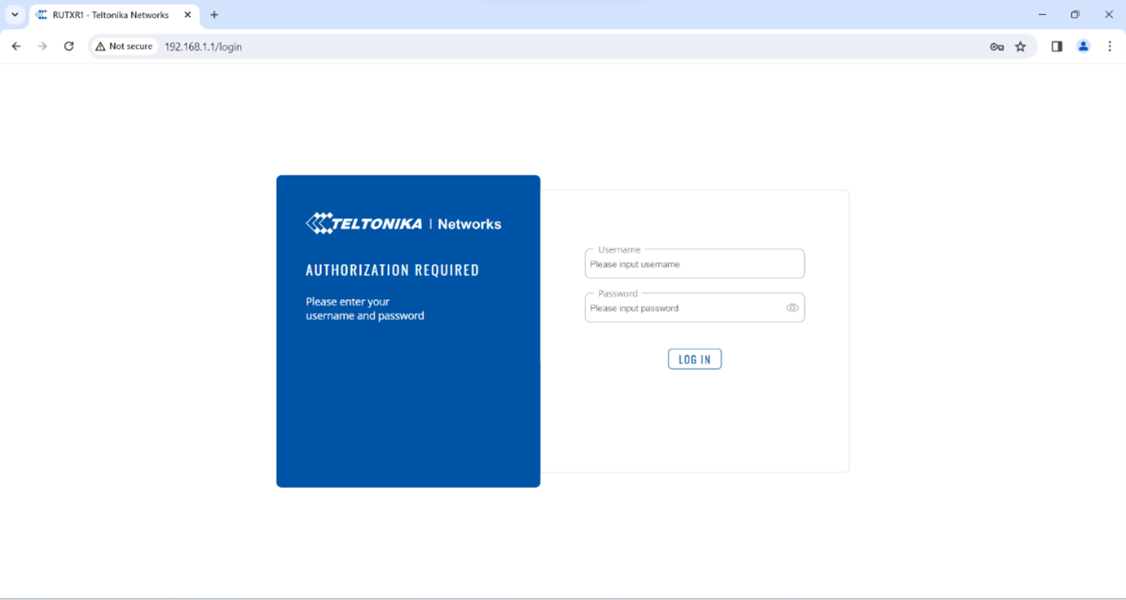
Once you have logged in, you will be prompted to change the default password to your desired password.

Once you have changed the password, you will be presented with the Dashboard. The best practice is to update the device firmware. You can do this by navigating to System > Firmware > Update Firmware. Ensure that the device firmware and modem firmware are both on the latest version.
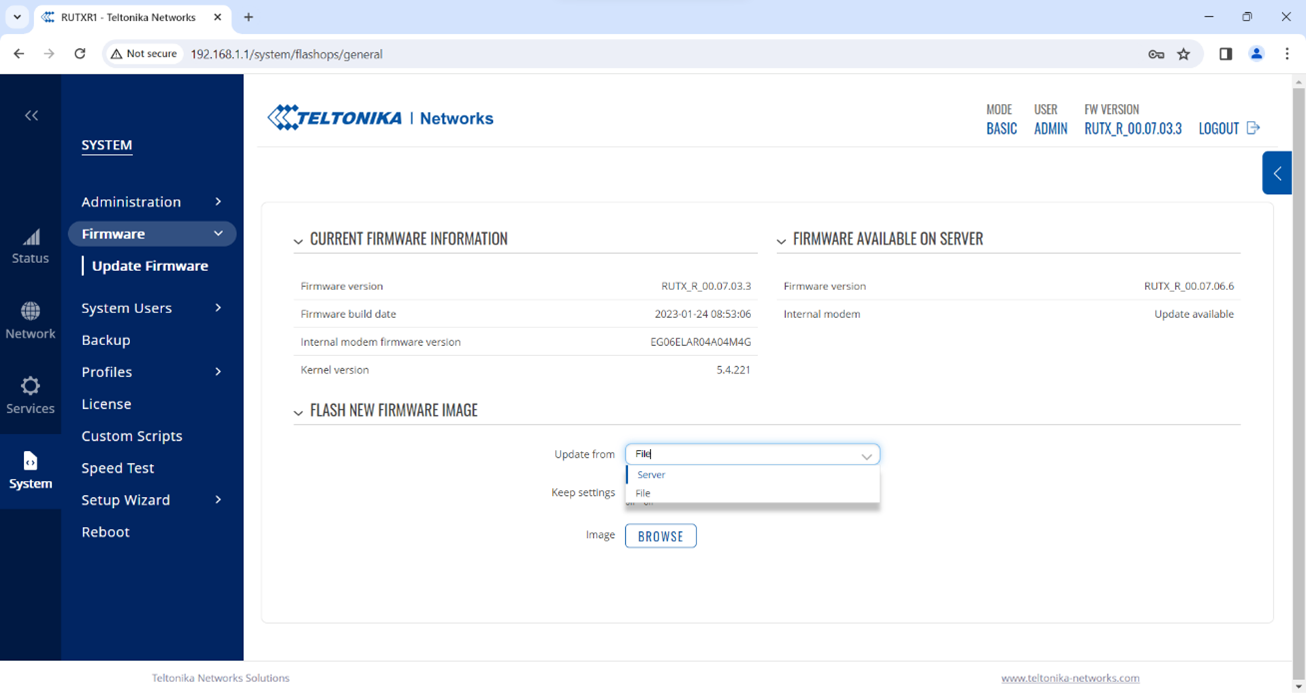
Once we have updated the firmware, we can start setting up the connections. Navigate to Network > WAN to see the list of available WAN connections. You will see the first WAN connection (1) Status shows Up because the cable from the ISP is plugged in. You will also see the LTE connection (3) Status shows Up because our SIM card is installed and ready.
For the WAN connection, we would like to setup a PPPoE connection with our provider so let’s edit the first WAN connection:
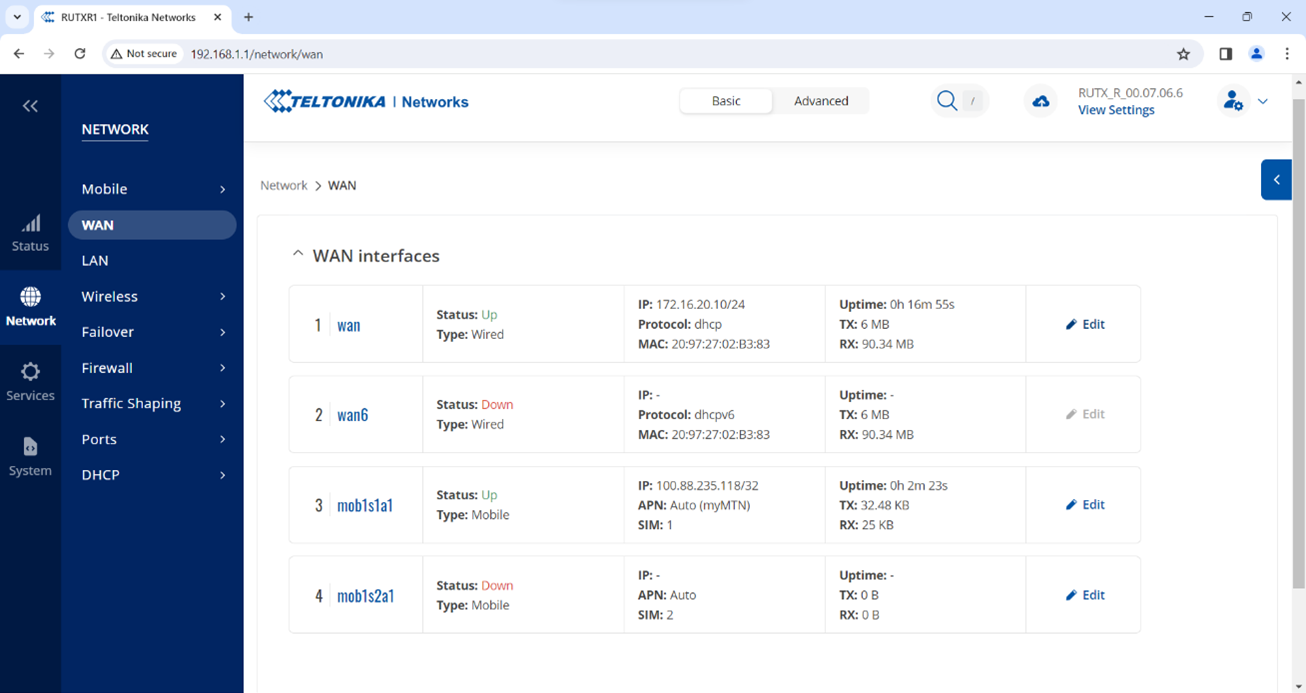
Once the WAN page is open, you can give the WAN connection a name and under the Protocol drop-down menu, select PPPoE.
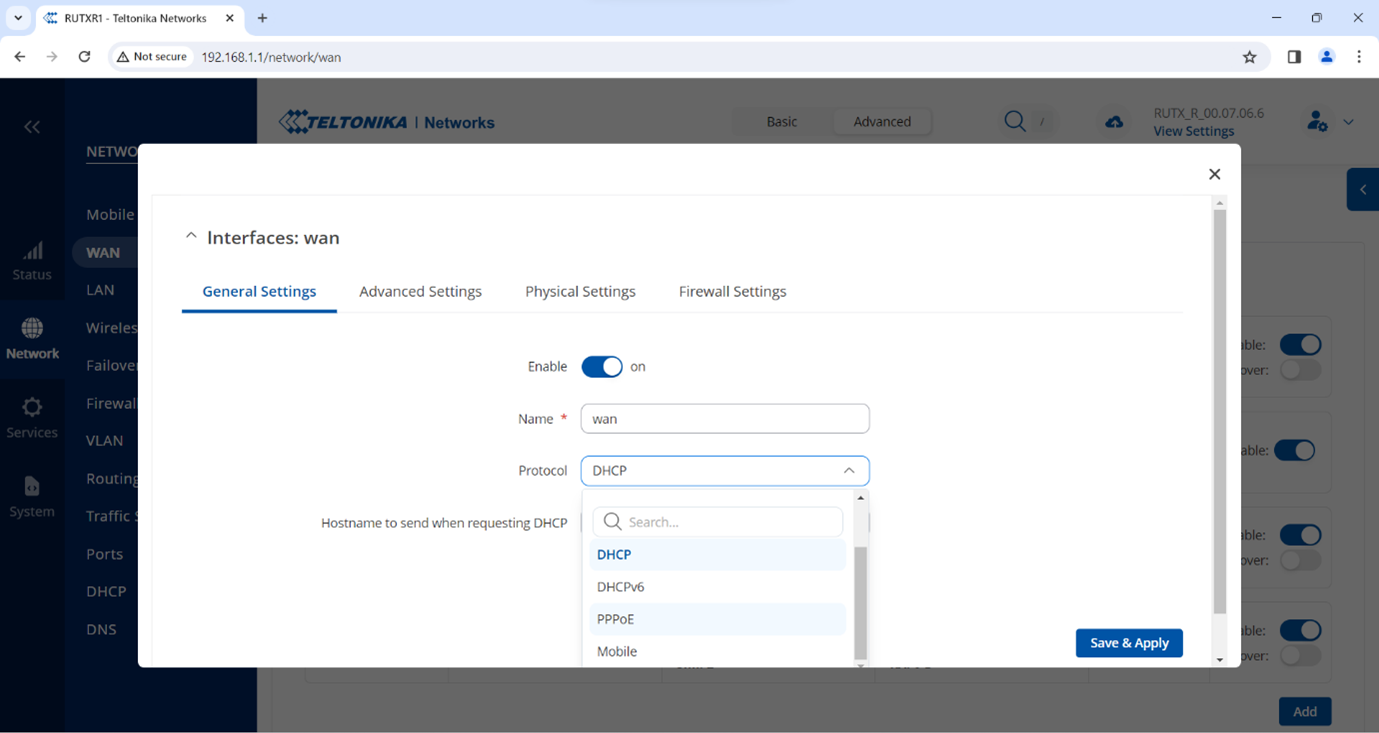
Once PPPoE is selected, you will see a username and password field. In our case, our PPPoE username is teltonika@miro.co.za and our password is 123456. Once you are finished, remember to scroll to the bottom to Save & Apply the new configuration.

Now just by scanning the Status screen, you will see that we have received an IP from our provider on the WAN connection (WAN MAIN) and the LTE connection (MOB1S1A1), we also received an IP from MTN.

Now that we have our WAN connections set up, we can test the LTE fail-over by running a ping test to Google DNS. To run this test, simply go to your Windows start menu and open Command Prompt. Once the Command Prompt is open, type in ping 8.8.8.8 -t.
By default, a ping will only send 4 ping packets and then stop automatically. Ending the ping command with -t simply means that the ping will continue until you tell it to stop.
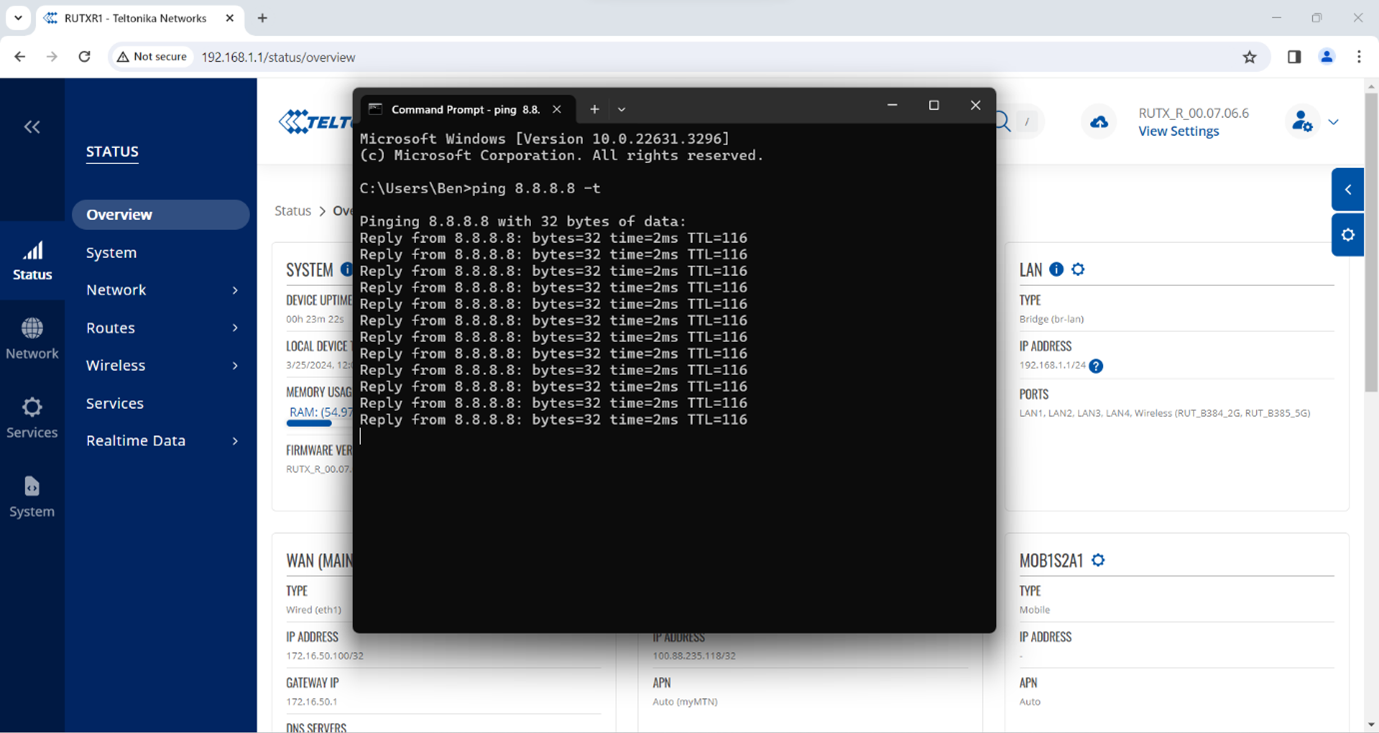
While the ping test is running, unplug the WAN cable to simulate a disconnection from the provider. You should see a Request Timed Out and an automatic fail-over to the LTE.
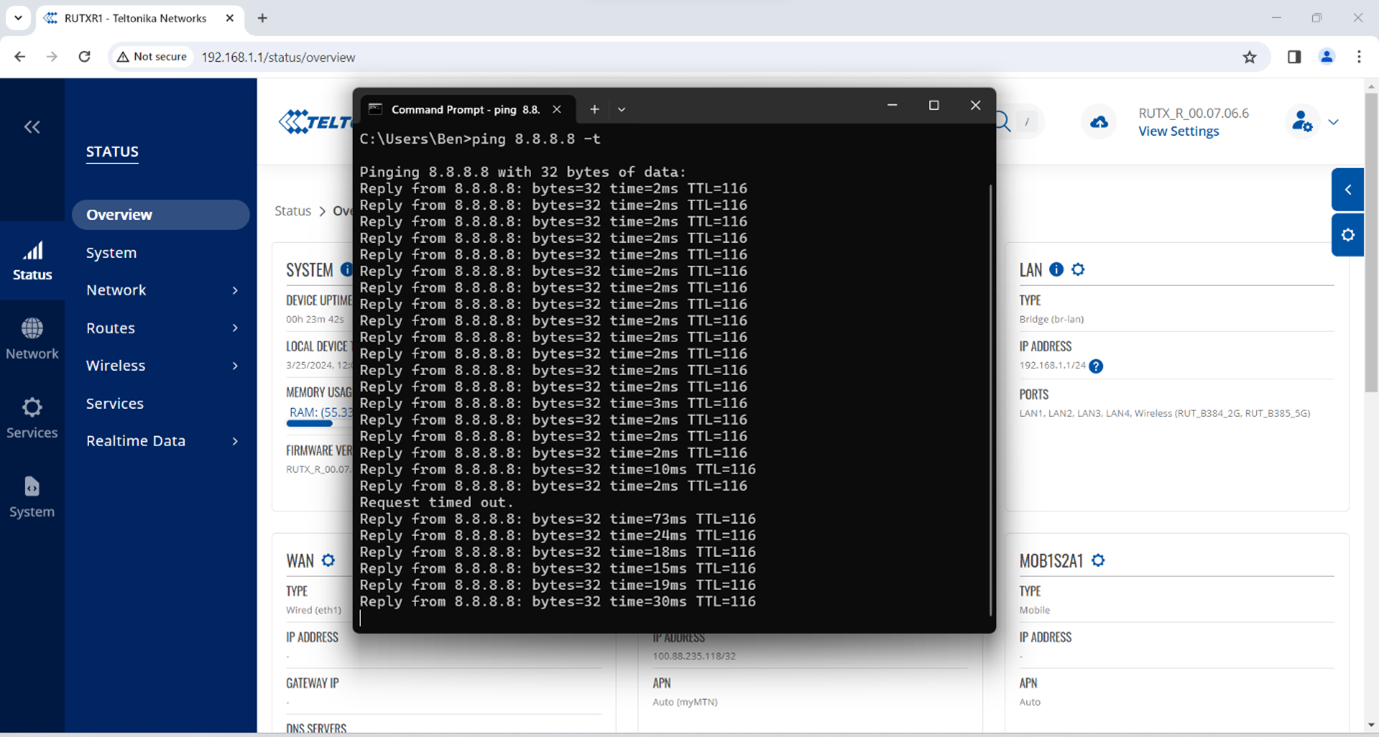
Now that we are running on LTE, let’s keep the ping test running and plug the WAN cable back in to see if the fail-over automatically changes back to WAN.
As you can see, the fail-over changed back to the WAN connection automatically. This is quite important especially if your LTE is using a data bundle. We don’t want the internet to use all your fail-over data.
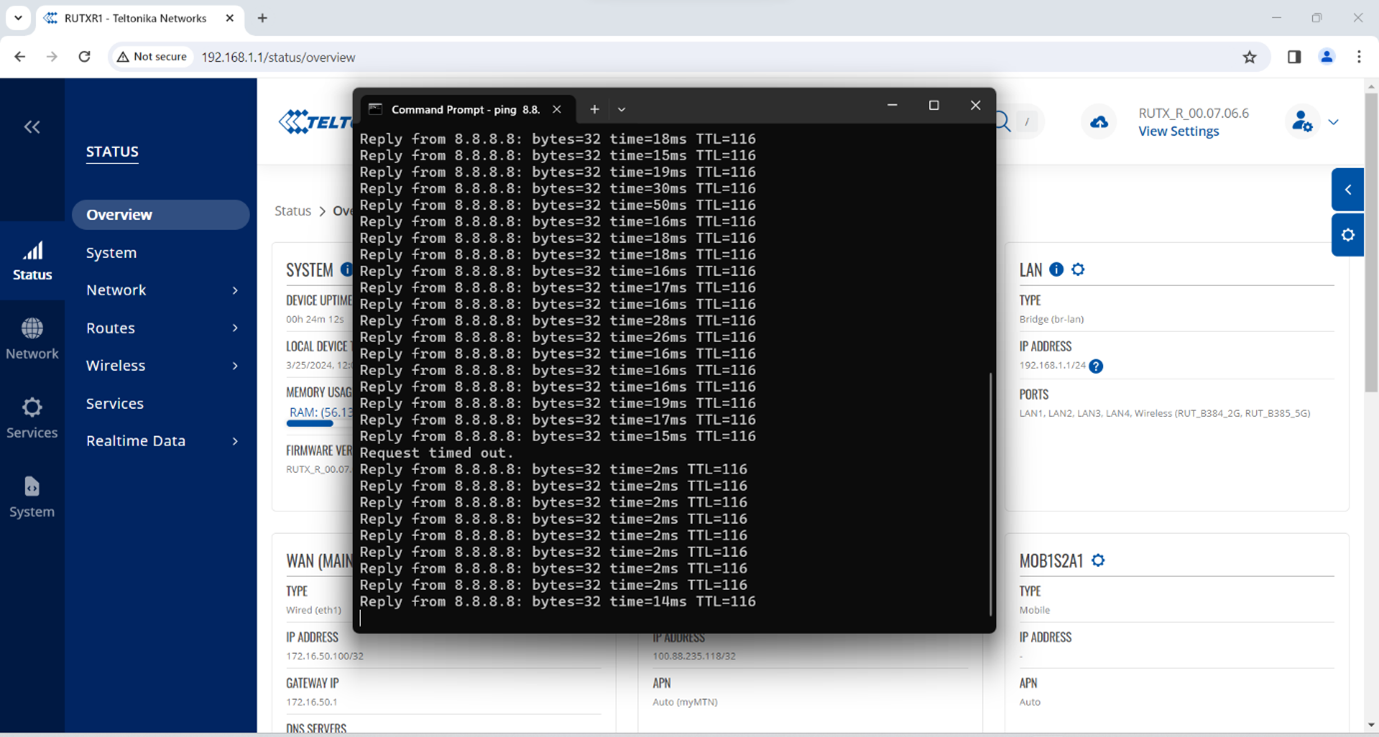
In some cases, the WAN connection might be the fail-over and the LTE the primary internet connection but if the WAN connection is set up, by default, Teltonika will use the WAN as primary. To change that, navigate back to Network > WAN and at the top of the page, change the view from Basic to Advanced. Once Advanced view is active, you can drag the LTE connection to the top making it primary (1) and the WAN secondary (2). Remember to scroll to the bottom of the page to Save & Apply.
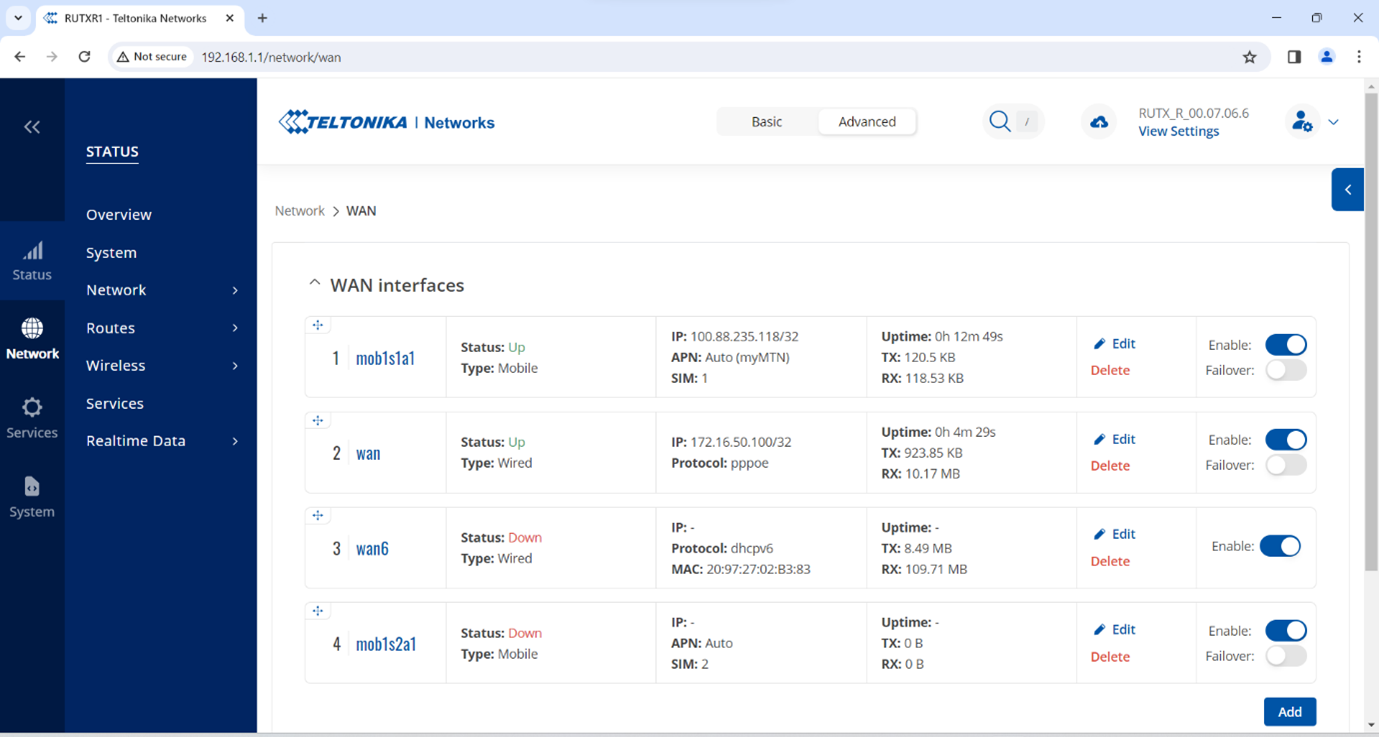
If you would like to test this while changing the connection order, we can run another continuous ping test to 8.8.8.8. While the ping is running, drag the LTE connection to the top, scroll down and click on Save & Apply. You will see a Request Timed Out, and now the LTE is the primary internet connection.

If you would like to manage and monitor your connection remotely, you can add the router to your Teltonika RMS account. To do so, in your internet browser, head to https://rms.teltonika-networks.com and log in to your account. Once logged in, go to the Devices page and at the top, click on Add.
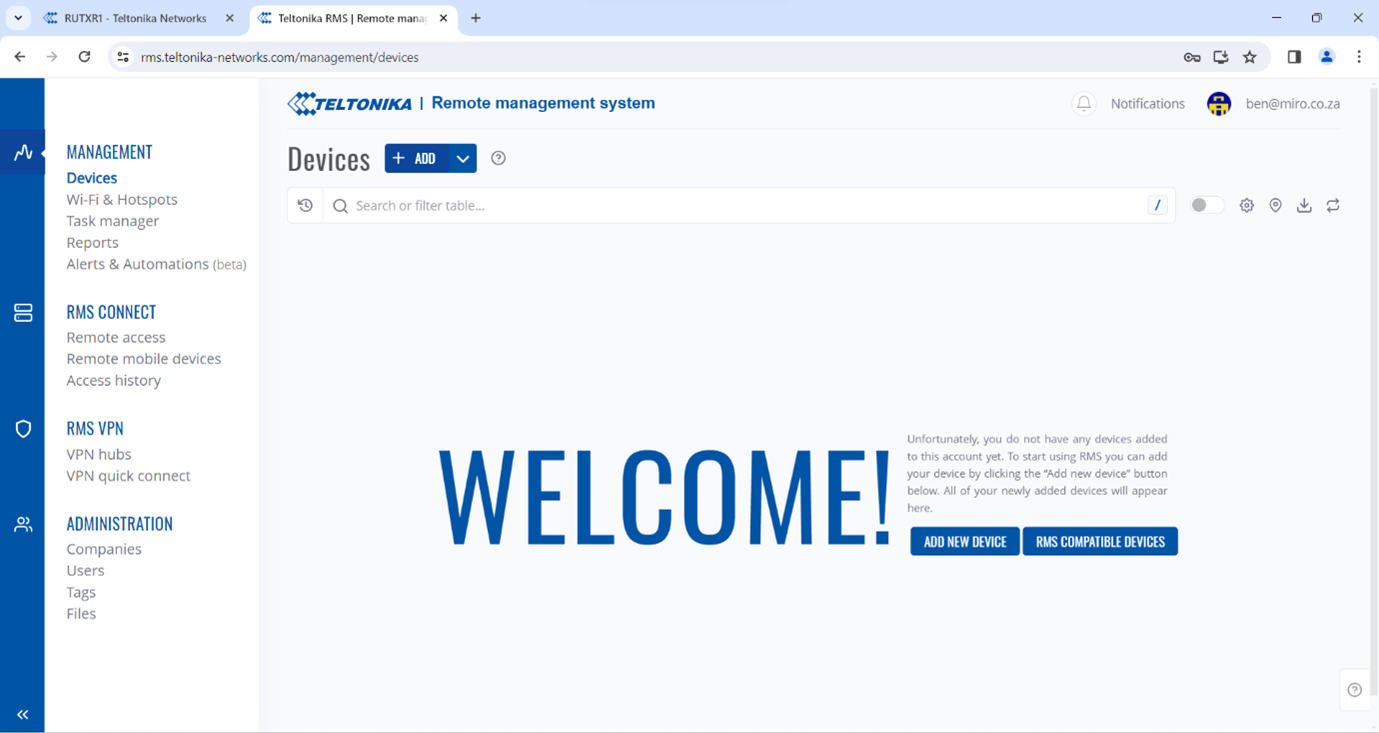
You will be presented with the below screen. Select the correct device, in this case, we have a RUT router, give the router a name and enter the Serial Number and LAN MAC address followed by the password. This is the password you changed during the first setup.
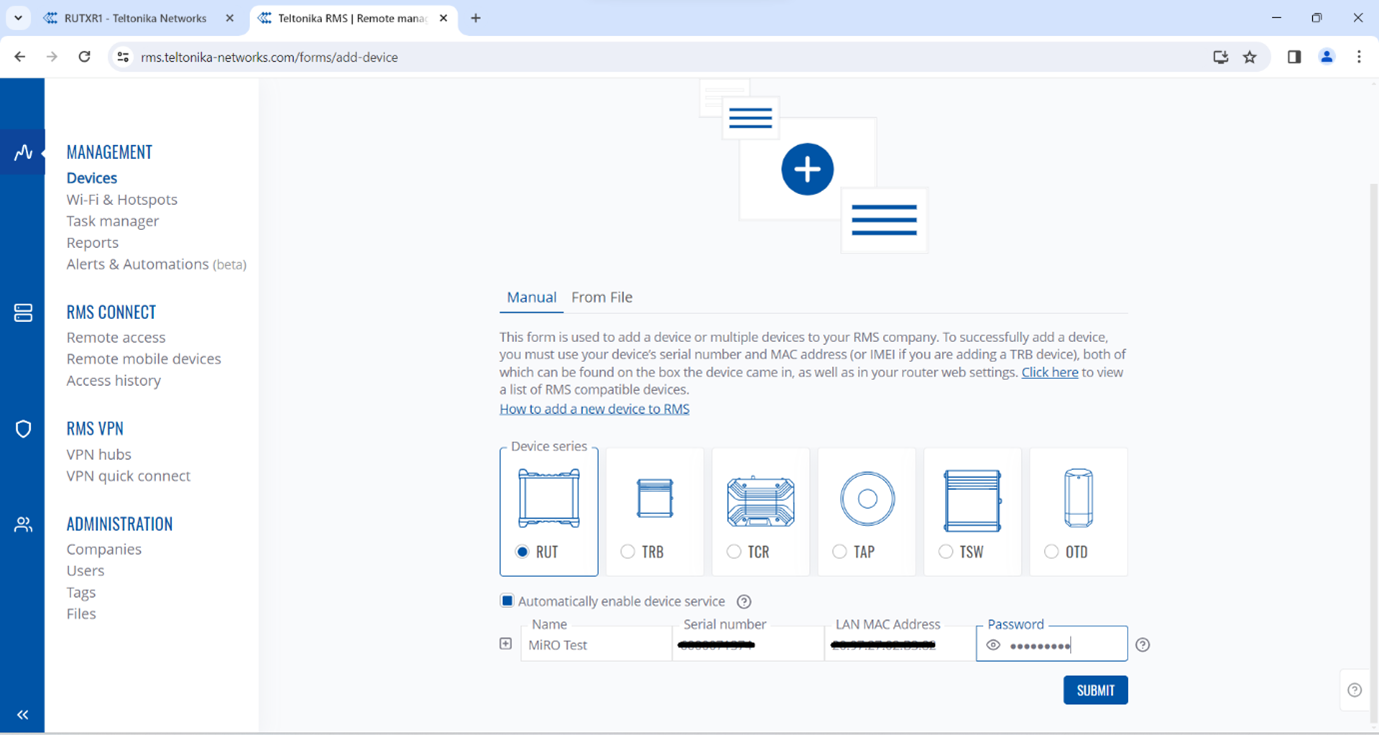
To ensure that there are no typos when adding the router to RMS, you can also find the Serial Number and MAC Address by going back to the router and navigating to Services > RMS. You will find the required details at the bottom of the page.
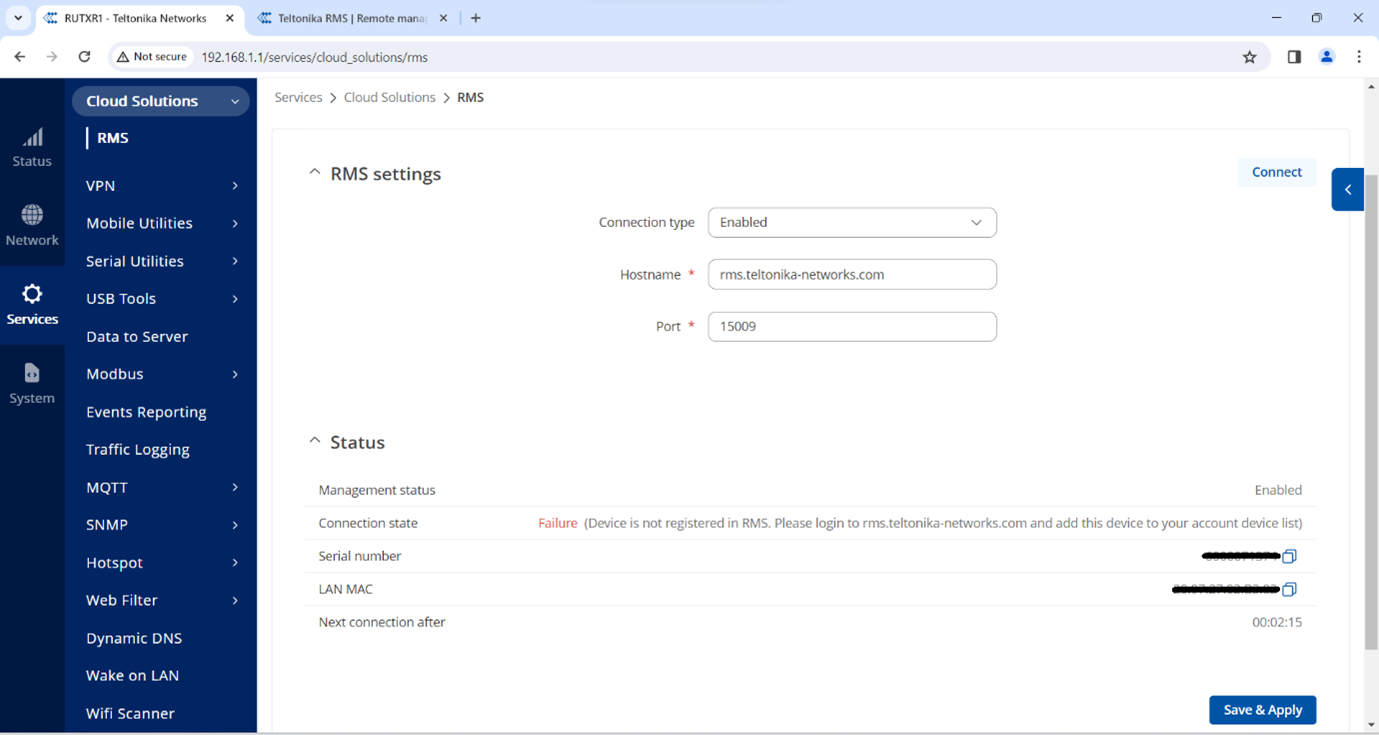
Once you have entered the details on RMS, click on Submit. An Action Status page will pop up and the RMS server will contact the router to add it to your RMS account. Once you get the “Successfully added all devices to the system” message, click on Next.

The final Action Status page will appear, and the router has been successfully added to your RMS account. You can click on Close.
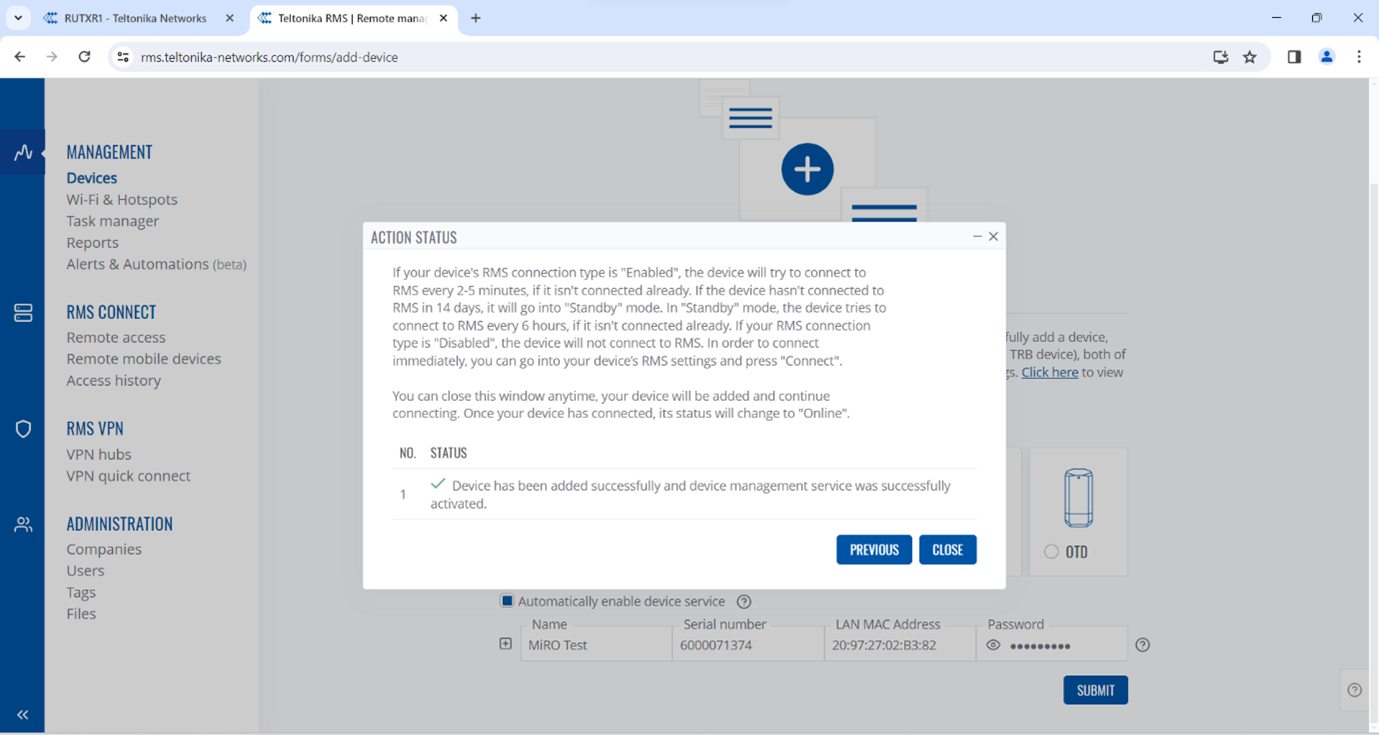
That’s it. You have successfully added your router to Teltonika RMS. You can monitor the status of the devices or make changes by clicking on Configure device.
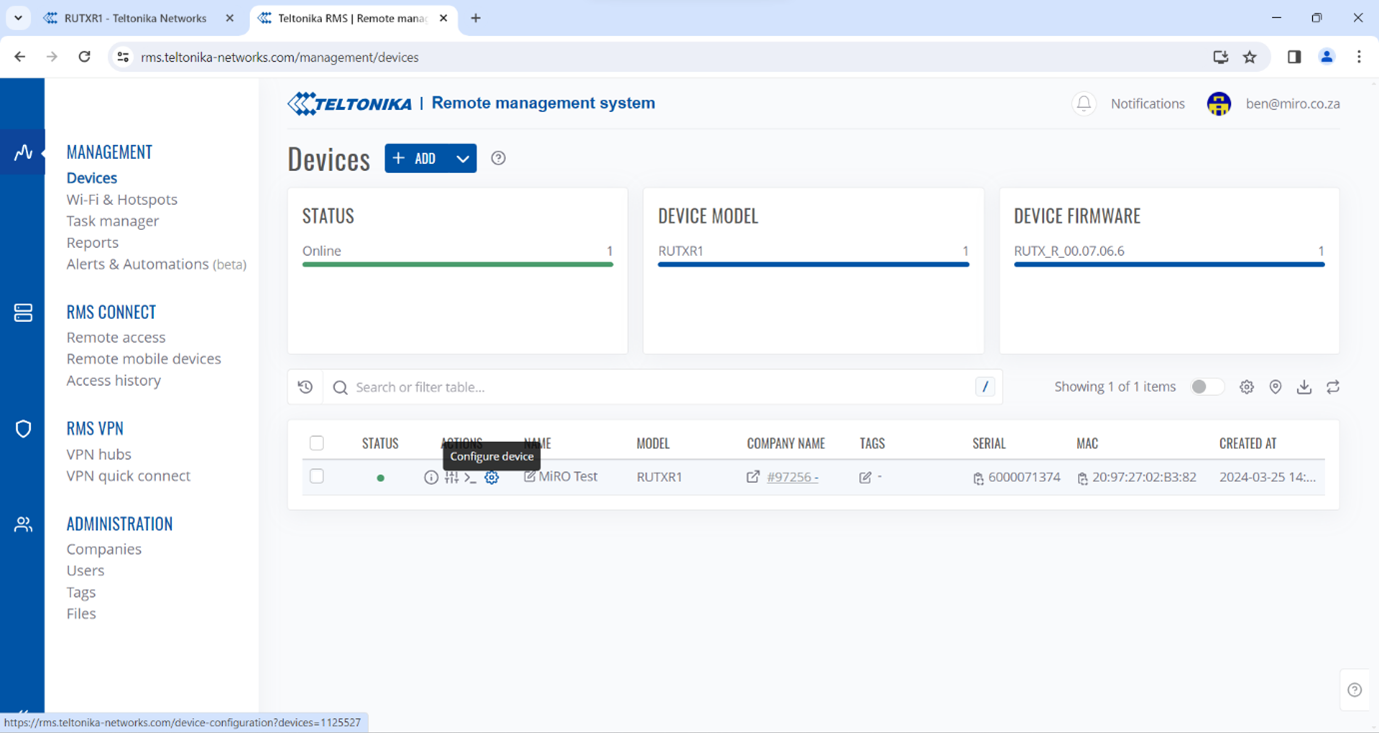
This item is available for shipping or collection from our Centurion branch.
This item is available for shipping or collection from our branch.
This item is available for shipping or collection from our Centurion branch.
This item is available for shipping or collection from our Cape Town branch.
This item is available for shipping or collection from our Durban branch.
This item is available for shipping or collection from our branch.
This item is available for shipping or collection from our Centurion branch.
This item is available for shipping or collection from our Cape Town branch.
This item is available for shipping or collection from our Durban branch.
This item is available for shipping or collection from our branch.
For more information, you can reach out to us at sales@miro.co.za or phone us on 012 657 0960.
Save products on your wishlist to buy them later or share with your friends.
Comments
View Comments